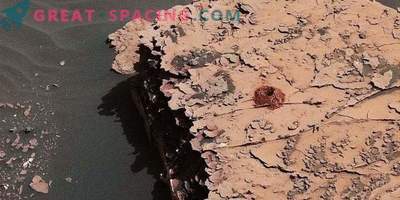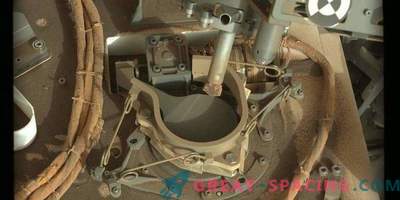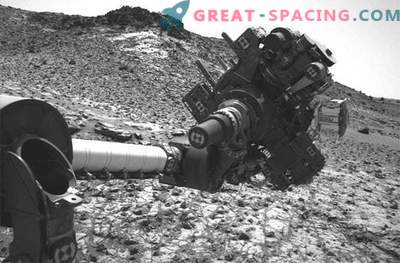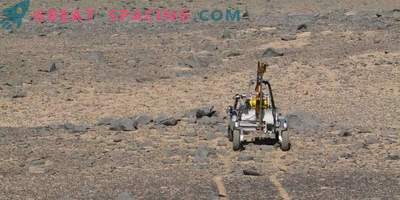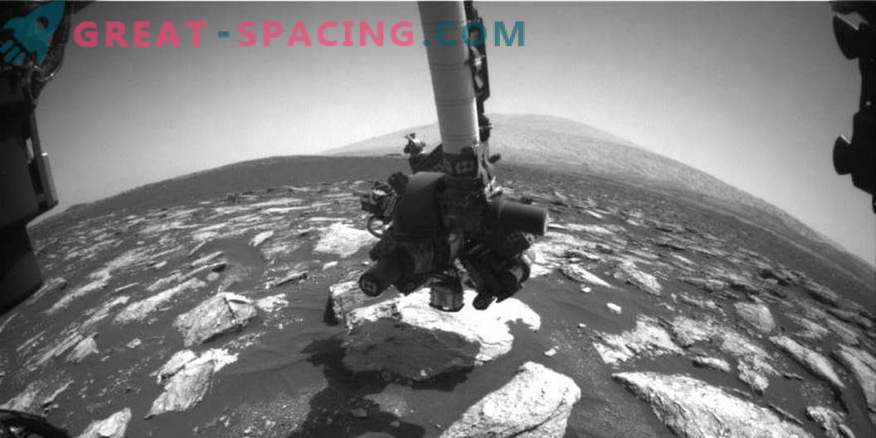
The Martian robotic manipulator turned out to be faulty. NASA left the rover in limbo while the problem is being solved.
When a drill breaks in millions of miles from the nearest store - this is bad. But this is exactly what happened with NASA’s Curiosity Mars Science Laboratory.
The rover, which is now located on the lower slopes of the 3.4-mile high Sharpe Mountain (officially known as Eolida), was to perform drilling operations at a geologically interesting site on December 1. But mission controllers received a response that Curiosity does not respond to commands. Early evidence indicates that the rover detected a malfunction with the “drill rig” feeder, which lowers the drill bit to the rocky sample, and interrupts the operation.
The photograph of December 4 shows that his “arm” is extended close to the ground.
The drill is an important component of the mission on the Red Planet. Since landing in 2012, a robotized geologist used a drill in 15 places to collect dust samples from the depths of Martian rocks. These samples were then studied by a robot in an onboard chemical laboratory. Scientists have made amazing discoveries about the planet's wet past, how minerals were formed, and even received hints about the history of life. Using the drill 7 times only in 2016, this error in the drilling operation leads the marsohod to an unexpected stop.
“We are in the process of defining a set of diagnostic tests to carefully evaluate the drill feed mechanism,” said Stephen Lee, deputy project manager for the Jet Propulsion Laboratory in Pasadena, California. “We use our test rover on Earth to pass tests before launching gears to Mars.” “For the sake of caution, we have not tested Curiosity yet. We want to limit any dynamic changes that could affect the diagnosis. This means not to move the “arm” and not to set it in motion so as not to shake it. ”
When the rover lowers its robotic arm to begin drilling, the drill feed mechanism pulls out the drill bit to touch the ground. According to the mission engineers, it turns out that either the physical brake on the stern does not turn off completely or the rover has encountered some abnormality in the power supply of the electric motor sensor. Both scenarios would cause a stop to Curiosity.
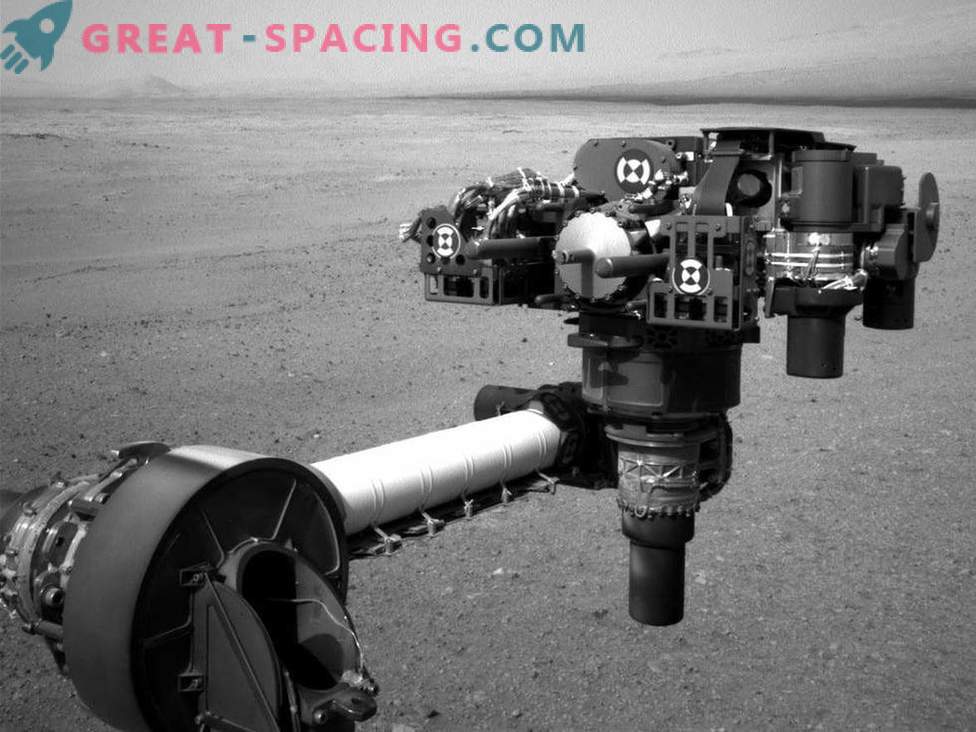
The drill that Curiosity uses to drill in rock samples is one of several instruments mounted on a robotic arm.
It is interesting to note that this is not the first time a problem occurs with a tool. The drill has two modes of operation: purely rotary, where the auger rotates like a hand drill, which is on the toolbar, and the mode used on December 1. It provides a percussion drilling method that resembles the action of a tiny pneumatic drill or chisel. Depending on the rock material, use one or both options. Since February 2015, the percussion mechanism is experiencing an intermittent short circuit, so mission leaders use it economically.
“We still have a shock mode, but we are careful and use where we really need. Otherwise, the first option copes with the extraction of samples, ”said Ashvin Vasavada, a researcher at the Jet Propulsion Laboratory, in a statement. As a precautionary measure, Curiosity was ordered not to move its hand while engineers eliminate problems with the rotary drilling mode. But the rover is not inactive. The rest of the tools work fine, so it's time for the mast chambers and the spectrometer, plus a set of environmental tools for monitoring the surroundings.
From the moment of landing, the rover traveled more than 9 miles and, after beginning its slow ascent of Mount Sharpe, climbed 165 meters (541 feet) in height. At strategic points, he collected samples and studied local geology to understand the evolution of Mars over millions of years. He managed to add more detail to an understanding of how the little world has turned from a relatively wet and potentially habitable place into a dry barren wasteland that we see today.
